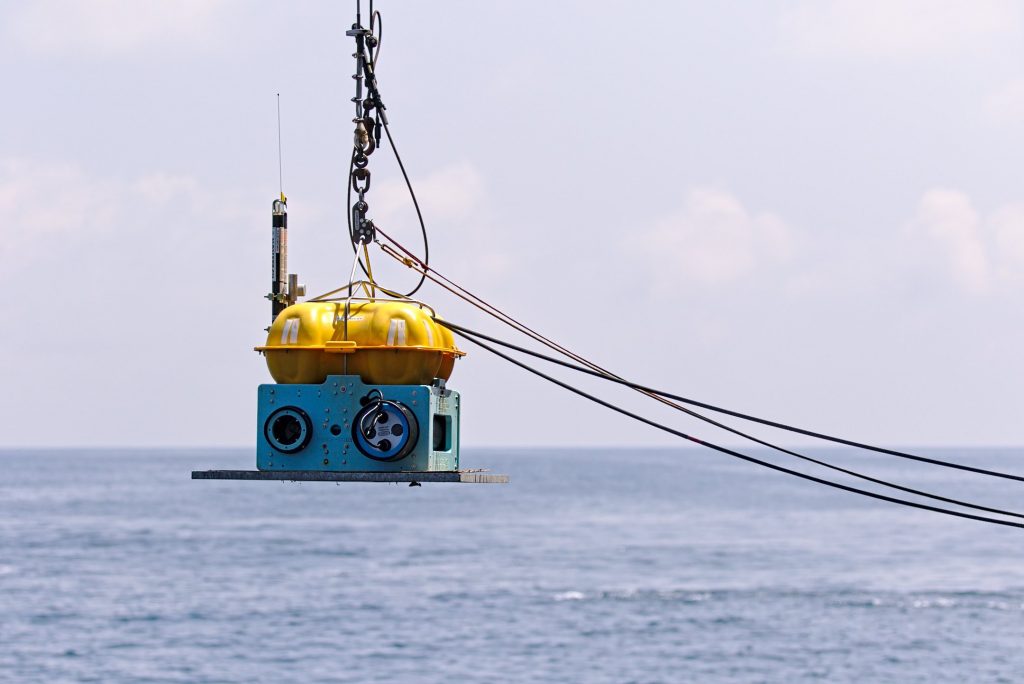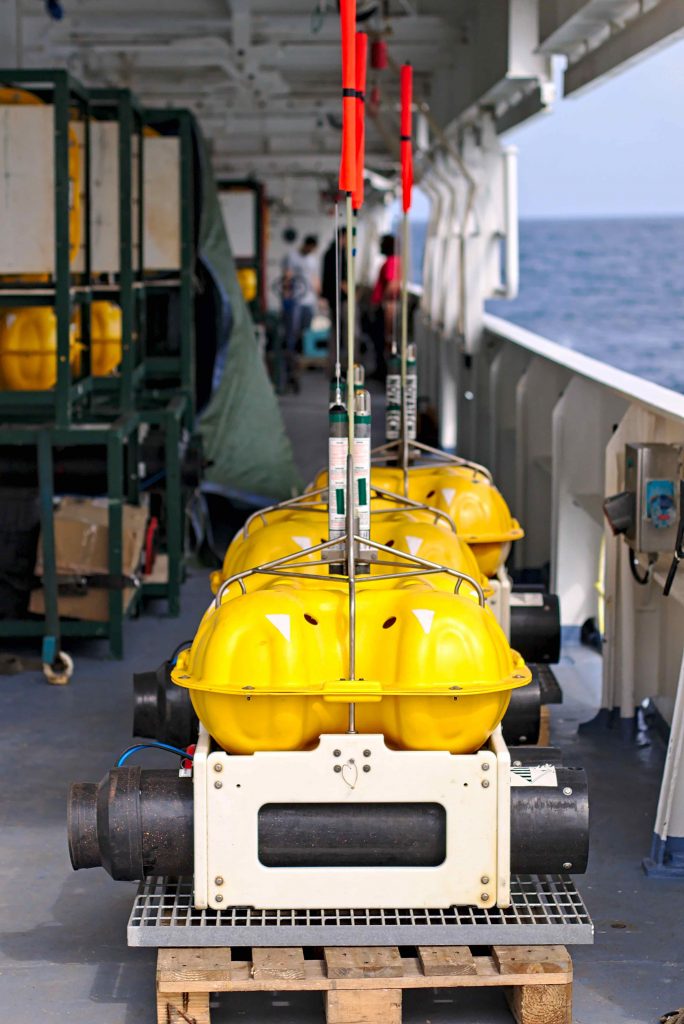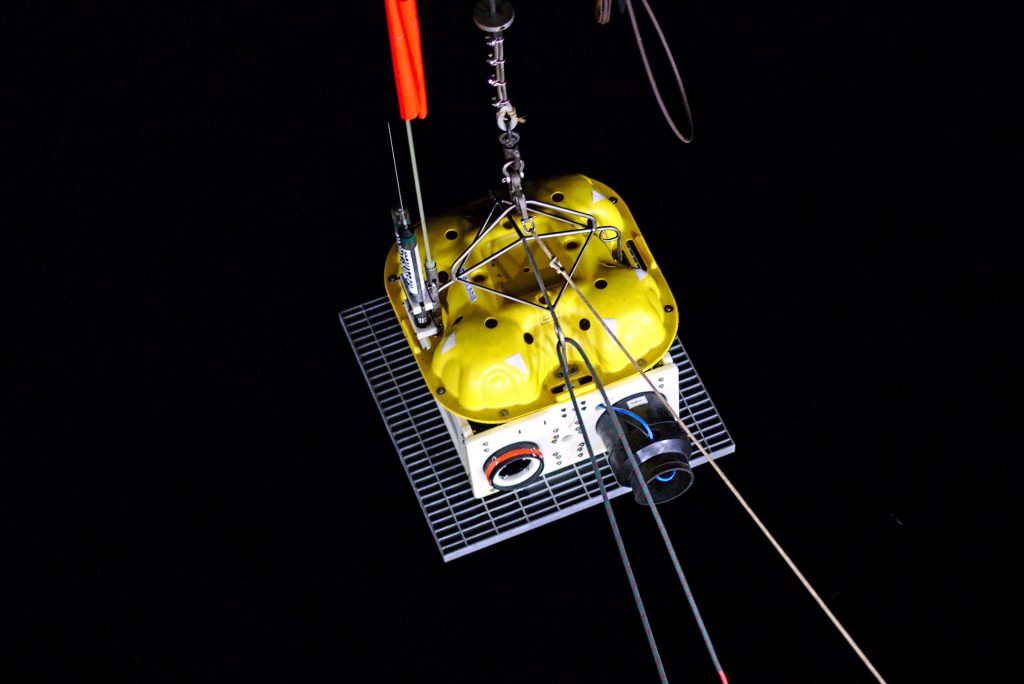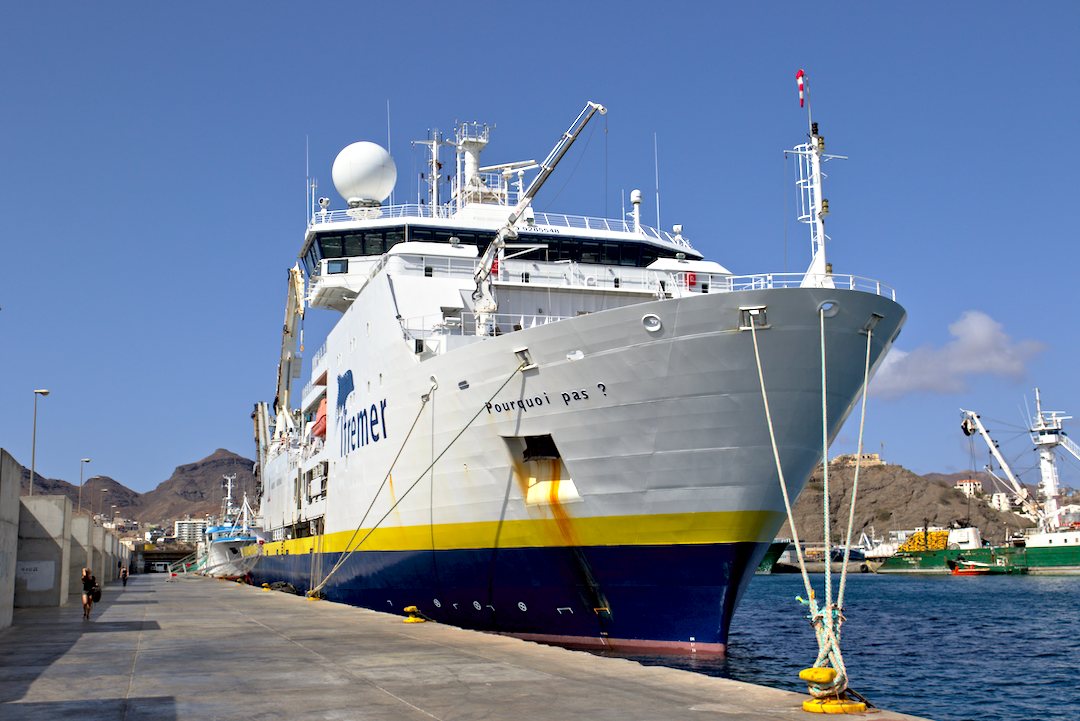The first few days of the SMARTIES mission have been devoted to the deployment of 19 Ocean Bottom Seismometers (OBSs) in the western Romanche Transform Fault and its intersection with the Mid-Atlantic Ridge (MAR). These will stay on the seabed for ~30 days passively recording the microseismicity of this dynamic area and will be collected at the end of the cruise before returning to Cape Verde.
The OBS study forms part of a collaboration between SMARTIES and the TRANSATLANTIC-ILAB project, led by Prof. Satish Singh at IPGP (http://www.ipgp.fr/~marjanovic/ILAB/ILAB/Trans-Atlantic_iLAB.html). The ILAB project is aiming to characterise the oceanic lithosphere and image the lithosphere-asthenosphere boundary from 0 Ma at the MAR to ~75 Ma near the African continental shelf. Three previous cruises in 2015, 2017 and 2018 collected several profiles of active-source seismic reflection and refraction data, as well as heat-flow, multibeam bathymetry, and potential field data, to try and map the base of the lithosphere and understand its physical and thermal structure.

The passive OBS study forms the last piece of the ILAB puzzle. Being able to map the microseismicity of this area will contribute to several scientific questions:
- The depth of the earthquakes will help to constrain the base of the lithosphere and its thermal gradient, and how the thermal regime changes across transform faults.
- The ridge-transform intersection (RTI) is extremely complex here with several small ridge jumps and a wide zone of unusual tectonics and deformation with both extension and uplift. Locations and focal mechanisms of the earthquakes can help to locate the current ridge axis and understand how the RTI is deforming.
- At this segment of the MAR, ‘normal-mode’ magmatic spreading evolves into amagmatic ‘smooth-seafloor’-type spreading close to the transform fault. We can see if there is a change in the seismicity which may indicate either melt migration, tectonic stretching or detachment faulting at different parts of the ridge axis.
- Transform faults may produce slow-slip events and have varying seismicity along strike depending on changes in composition and fracturing. Combining the observed seismicity with high-resolution bathymetric mapping, tomographic velocity models and the submersible mapping and rock sampling by the Nautile will produce an integrated analysis of the controls on oceanic strike-slip faulting.

OBS on deck Photo C. Hamelin © Ifremer 
Night deployment Photo C. Hamelin © Ifremer
By E. Watson
